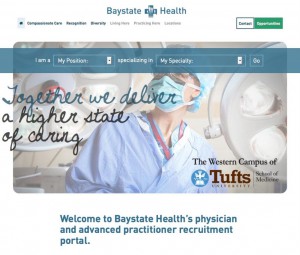SEO and SEM Basics to Make Your Career Site Job Postings Discoverable
As much as we all wish candidates would come to your main consumer-facing website to learn about your employment value proposition, compensation, benefits, hiring events, and application process before looking through your available positions and selecting the most suitable one, statistics indicate that 70% start with Google followed by Indeed and the other job boards.
Knowing that, we can develop a strategy to make the most of that experience by ensuring your jobs show up in those results. Your digital strategy should incorporate search engine optimization (SEO) and search engine marketing (SEM) tactics. Here is a primer on both:
SEM
Google/Microsoft Ads
The quickest guaranteed way to show up at the top of the search engine results pages (SERP) is advertising. While not the least expensive option, it will get your jobs in front of active job searchers immediately. A great tactic is to advertise job categories rather than specific positions. Driving traffic to a well-crafted landing page for a category gives you an opportunity to help candidates see how they can fit into your organization while improving your quality score.
The search engines want to be sure they are delivering what the individual really wants. They weigh your ad’s relevance, clickthrough rate, and landing page experience to create a quality score. Higher scores lead to lower costs and better ad placement. Focus on relevance and user experience to boost your quality score.
Even if you are paying for placement, they want to be sure your ad drives people to relevant content. For example, if your ad is for red shoes, it had better link to a page about red shoes that engages people to prove relevance. We’ll dig deeper into creating compelling landing pages in the next article of this series.
SEO
Google/Bing Jobs
Google and Bing have both developed convenient job tools that allow job seekers to find an up-to-the-minute list of jobs right in the search engine results page. These tools serve relevant results for each individual from your sites like your careers site and job boards. Ranking in these job tools relies on an algorithm similar to the rest of their search results. Following are two tactics that will help ensure your jobs show in these sections of the SERPs.
The Importance of Structured Data
Schema.org has defined a format called “structured data” for job listings that aids search engines in comprehending and displaying employment-related content more effectively. This structure contains relevant details about the job, such as the title, employer, location, kind of work, pay scale, and application materials. Using structured data to ensure that your jobs comply with schema.org standards is a part of any SEO strategy that will improve the visibility and depth of job ads in search results.
Feeds to Job Boards
Despite all your best SEO efforts, some of the job boards’ authority scores might be too high for your careers site to overcome. That’s the reason part two of an omnichannel SEO strategy is to take control of how your jobs appear on job boards. By default, job aggregators such as Indeed scrape your ATS, which sounds great at first blush. But this creates a less-than-ideal candidate experience. When a job seeker who finds your job on one of the job boards and clicks through to apply on a generic job description within your ATS, they miss out on almost everything you have to say about your organization that might convince them to choose you over the competition.
How AB&C solves this is a bit involved, but well worth the effort. It begins by setting up a careers website that serves a feed of live jobs from your ATS. From there, you’ll want to make sure your careers site becomes the official source of truth for any job board showing your listings.
You’ll need to reach out to them to set up a properly formatted feed of your jobs in the format they require. Some may simply start scraping content from your careers site instead of the ATS once they know it is now the official source of truth. However, to have the most control over the candidate pathway, you’ll want to provide them with a feed that incorporates the structured data and any other content that helps separate you from other choices a candidate might be considering.
Bonus points for your efforts to control the outbound feed to job boards. When a candidate clicks to apply from a job description, they wind up on a fully optimized job details page on your careers site instead of directly in the ATS.
We will get into full details on how to optimize job details in upcoming blog posts in this series. Sign up now to get an email when our next post about how to make the most of that experience goes live.


















